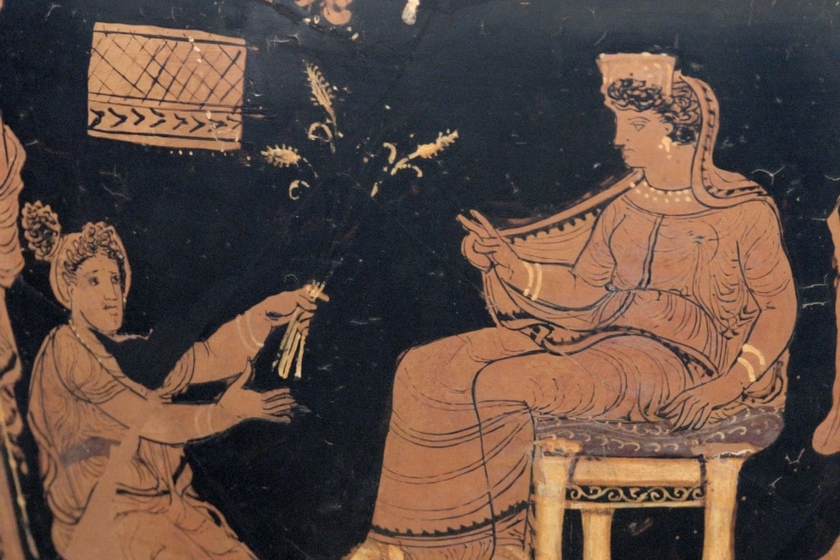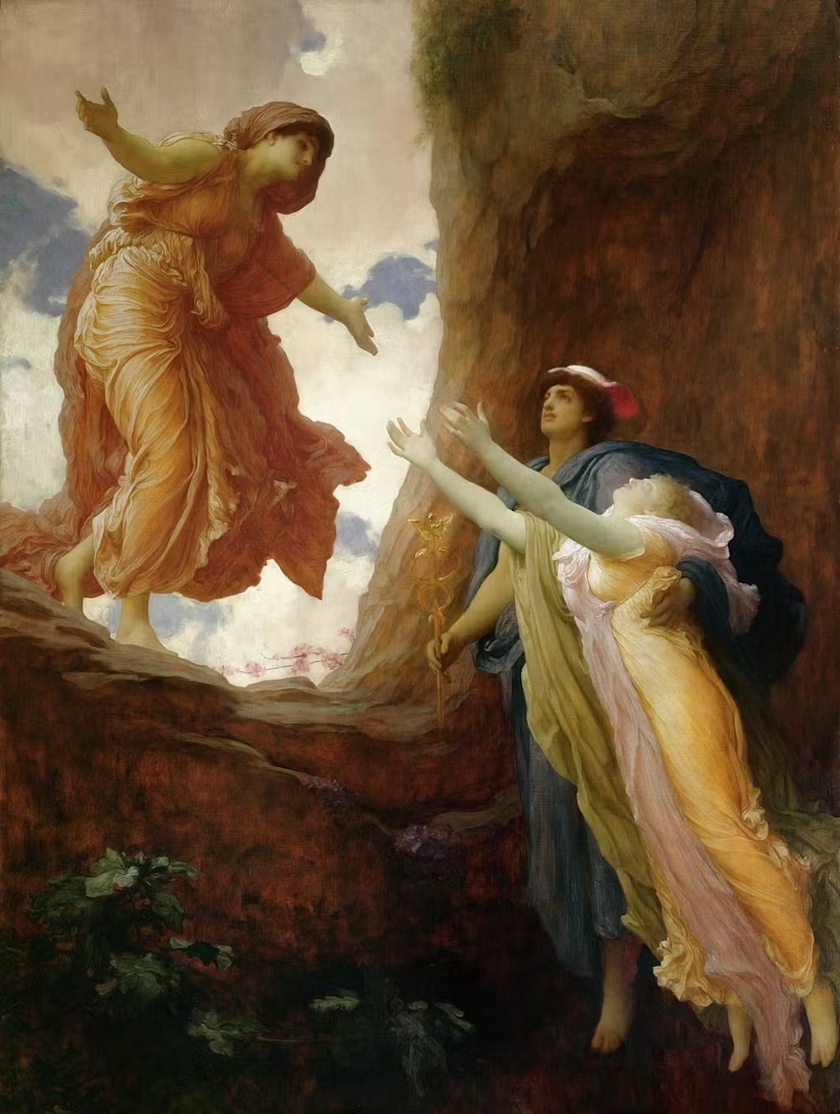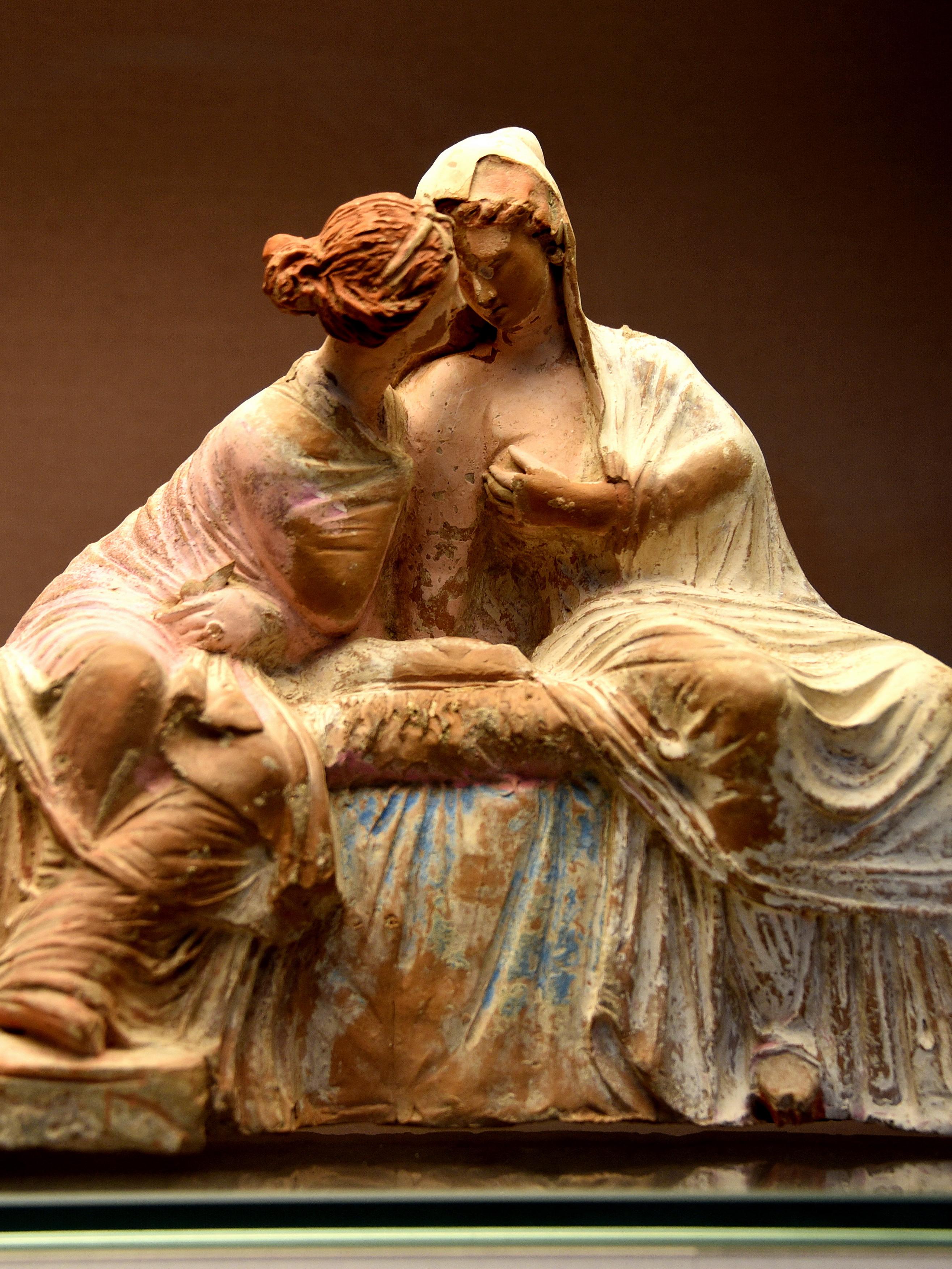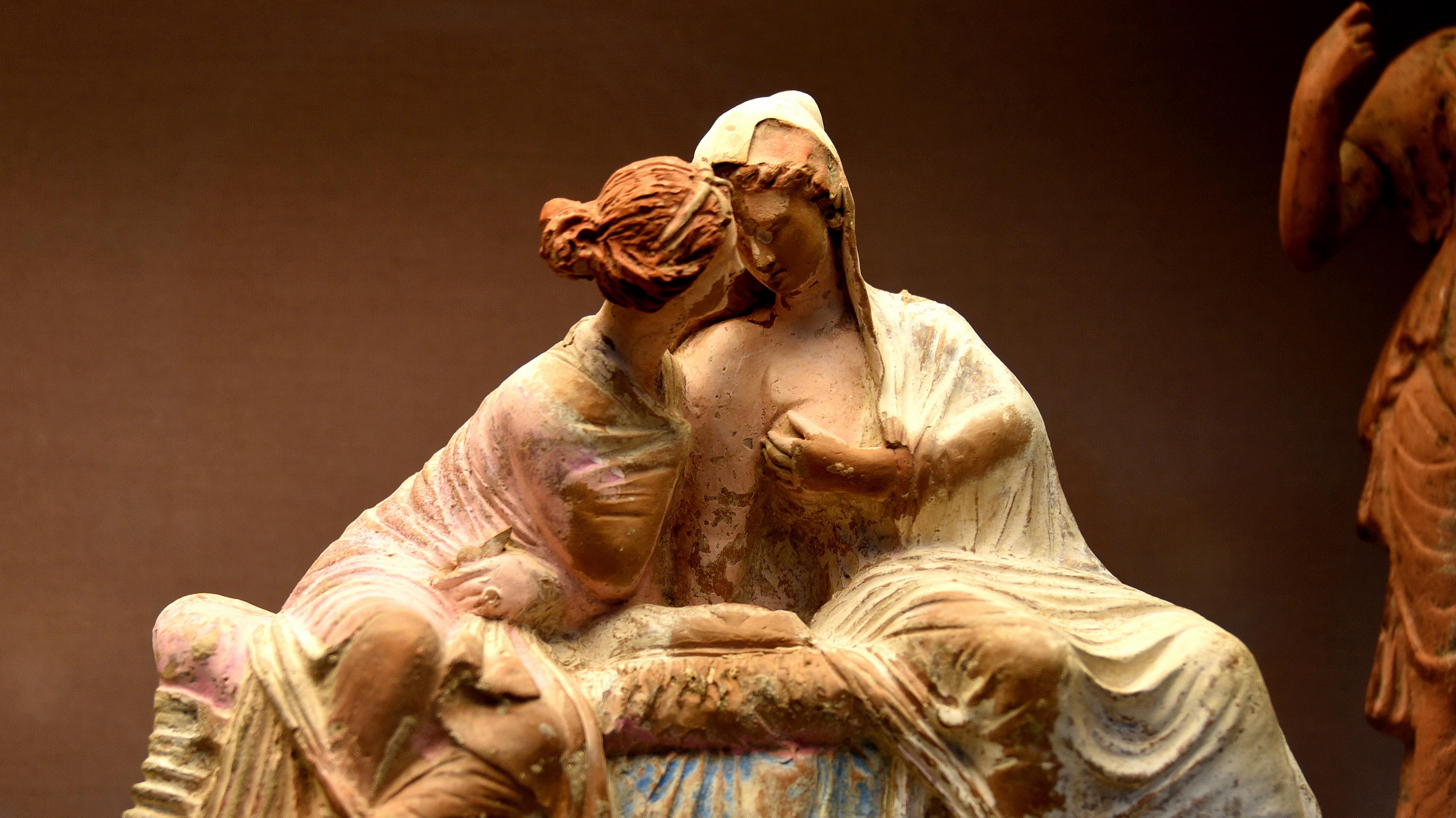Thesmophoria – women's privilege in an unequal society
In ancient Greece, festivals were an essential part of the political and social life. Although there were 120 days of festivals in the year, most were reserved for male citizens, with women often being strictly prohibited from participating.
During that period, women were generally not considered citizens in the same sense as men. Women did not have the right to vote, participate in politics, or hold public office. They did not have the same rights to participate in public activities as men. Women's status was often tied to their families, with their primary roles being to manage the household and bear children, and they were subject to the guardianship of their fathers or husbands. Their marriages were also rarely based on love, but instead, the main goals were to maintain the family line and to consolidate the economic and social benefits for both families.

"Thesmophoria" (1894-1897) by artist Francis Davis Millet
So the fact that an annual festival was not only for women but that they themselves were directly involved in the preparation of it had a profound meaning for this lower half of society. This privilege was due to the Greek notion that the fertility of the fields was closely related to the fertility of women.
Thesmophoria was a three-day festival held at the time of sowing before the harvest season to honor the goddess Demeter and her daughter Persephone (also known as Kore). Ancient sources indicate that the festival was widely celebrated throughout the ancient Greek world, but was most concentrated in Athens, where the most written evidence is found.
The festival took place from the 11th to the 13th of the month of Pyanepsion in the Attic Greek calendar (equivalent to October and November in our calendar today). Pyanepsion marked the beginning of autumn, the time when agricultural workers would plant wheat, barley and beans for the winter. Rituals performed during Thesmophoria were intended to ensure sacred protection of the land, ensuring a healthy climate for a bountiful harvest.

Demeter - goddess of agriculture, nature, harvest and abundance
The Tale of Two Fertile Goddesses
Demeter and Persephone are a mother-daughter duo associated with agriculture, harvests, and fertility. The Greeks especially worshiped these two goddesses of fertility because in an agricultural society, ensuring a good harvest was extremely important. According to legend, Hades, the god of the underworld, was so captivated by Persephone's beauty that he kidnapped her to the underworld, causing Demeter to become angry and abandon her farming work to find her daughter. After eating the food of the underworld and becoming a person of the underworld, Persephone was forced to return to the underworld with Hades every year for about 1/2 (or 1/3) of the year.
From then on, Demeter stopped protecting the crops while her daughter was in the underworld, making it impossible for humans to harvest during this time. But when reunited with her daughter, Demeter's joy spread throughout the earth, resulting in bountiful harvests. Since myths often explain changes in the natural world, the story of Persephone and Demeter shaped the ancient Greek concept of the seasons. In addition to serving as a pre-harvest ritual, the Thesmophoria also celebrated Persephone's return from the underworld.

“The Return of Persephone” (1890–1891) by Frederic Leighton
Sacred rituals during the Thesmophoria festival
One of the festival's most important agricultural rituals was the sacrifice of piglets. The origins of this ritual are mentioned in the Dialogue of the Courtesans by the Byzantine scholar Lucian. According to Lucian, at the time Hades captured Persephone, she was picking flowers in a field where a swineherd named Eubouleus was also tending his pigs. When Hades captured Persephone, everyone on the mainland fell into the Underworld.
On the first day of the festival, Anodos (the ascent), women pay homage to Persephone and Eubouelus by sacrificing piglets and burying them in a pit called a megaron. A group of women called the Antleriai retrieve what remains of the piglets from the previous year and bring them back to the altar.
On the second day, Nesteia, women were required to fast. They would place the pig’s carcass on an altar, mixed with pine branches and cakes shaped like snakes and humans, symbols of fertility in the Greek world. Participants in the ritual believed that the pig’s carcass, when combined with grain, would ensure divine protection for their crops.
The final day, called Kalligeneia (beautiful birth), is dedicated to female fertility. By praying to the Eleusinian goddess (also known as Kalligeneia), Demeter's nursemaid, women can ask for protection for their fertility.

Ancient Greek women
Ancient texts often describe the occasion as a time when women would engage in “ritual obscene acts.” They were encouraged to tell crude jokes, use profane language, and even fight—a pastime of the goddess Demeter. These acts were believed to be closely linked to women’s sexuality and fertility.
Since women were largely confined to the domestic sphere in ancient Greece, the Thesmophoria offered them – albeit only as wives of citizens – an opportunity to participate in public life that they otherwise would not have had. Since agricultural fertility was essential to sustaining the growth of city-states, the festival allowed women to temporarily abandon their domestic duties and join the civic life of the Greek world.




































